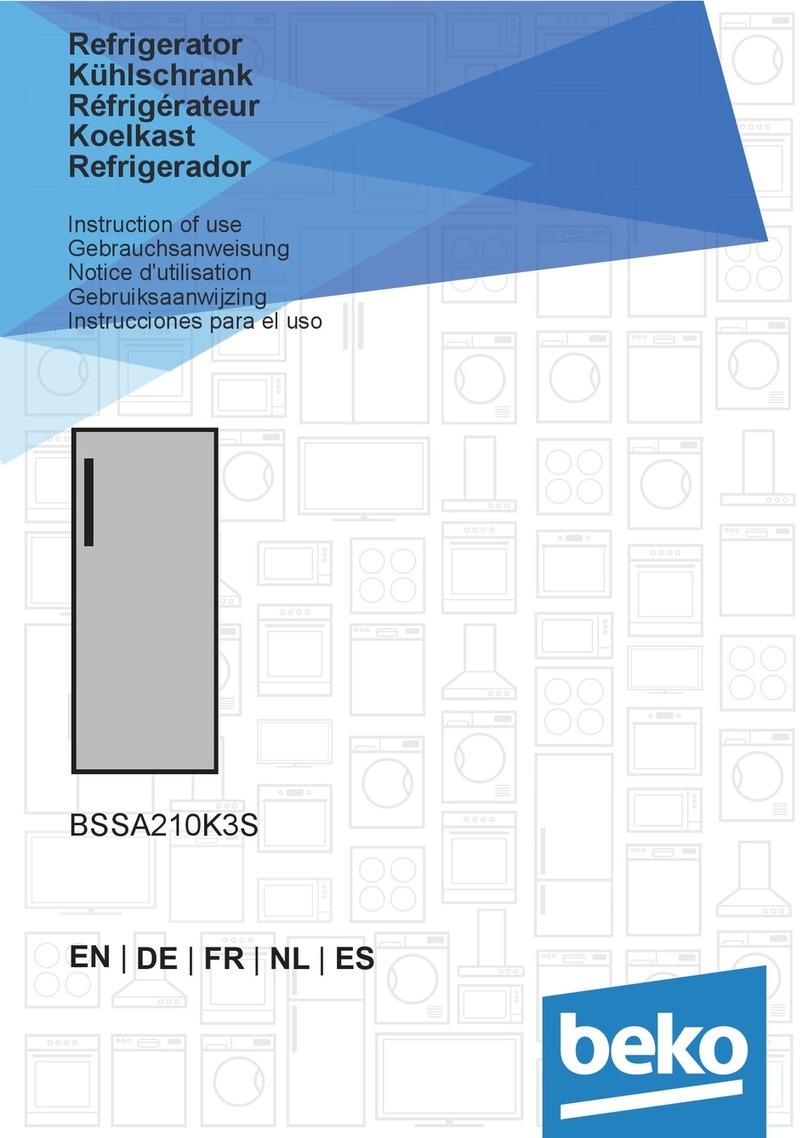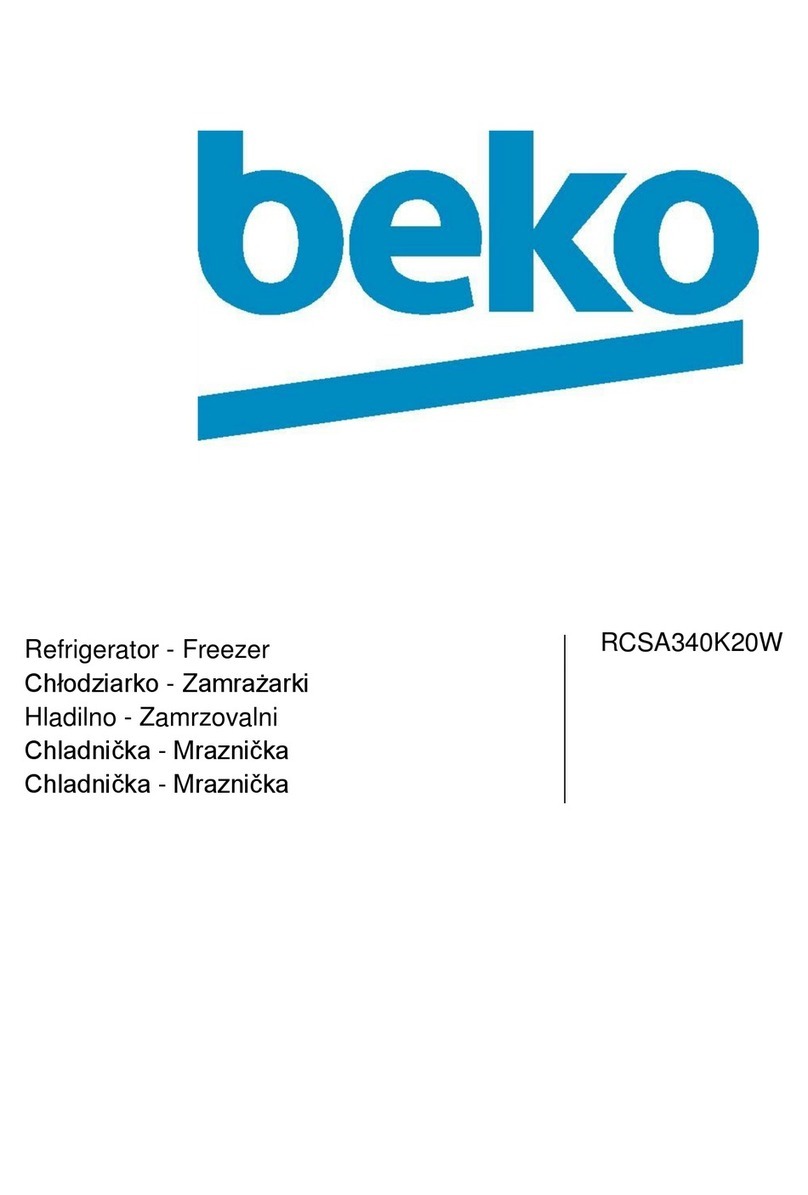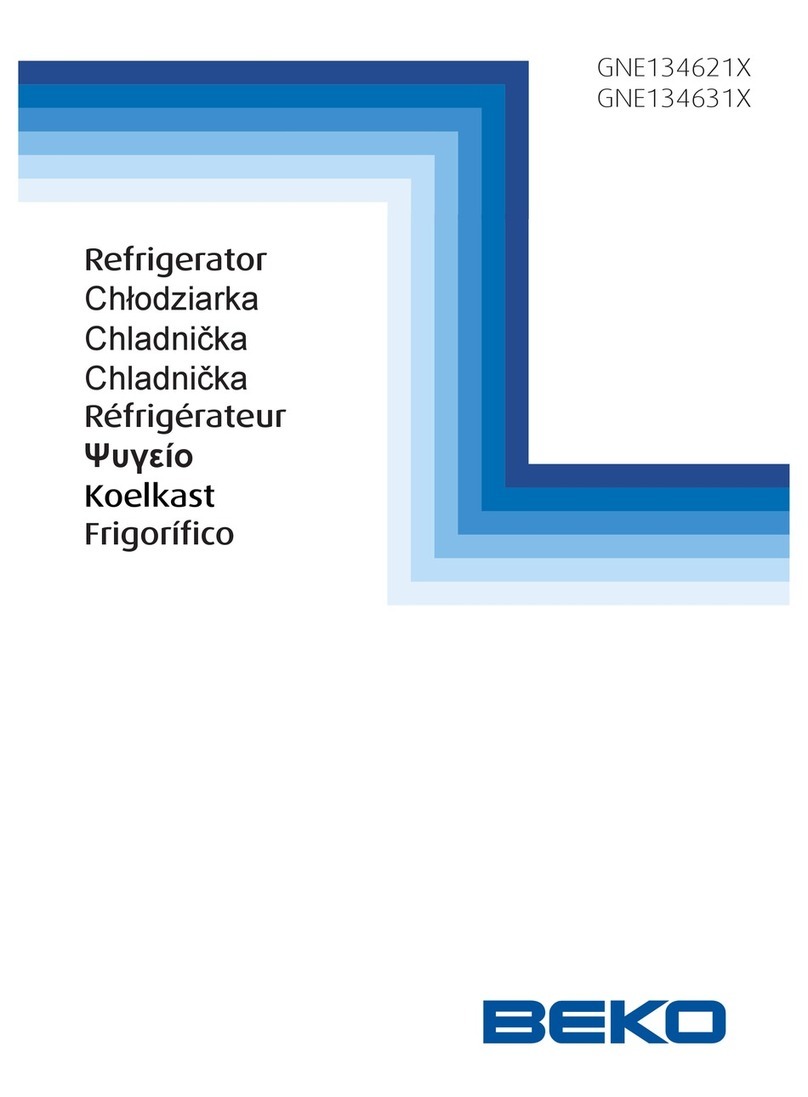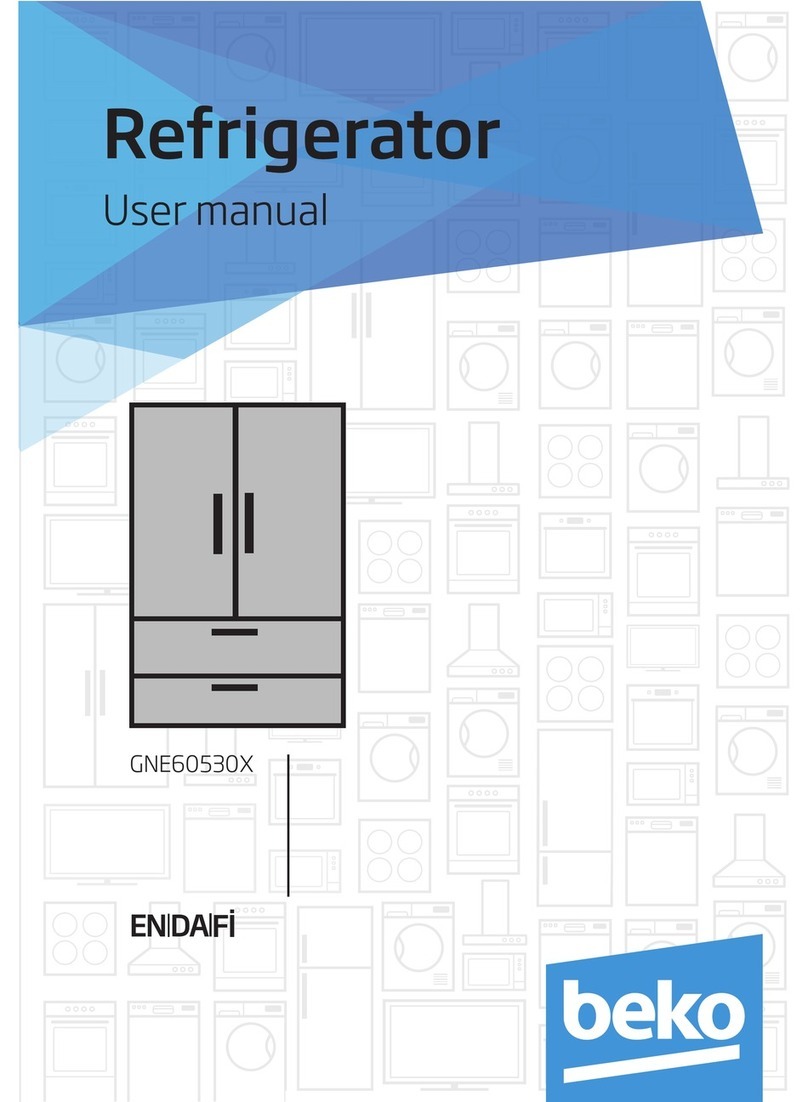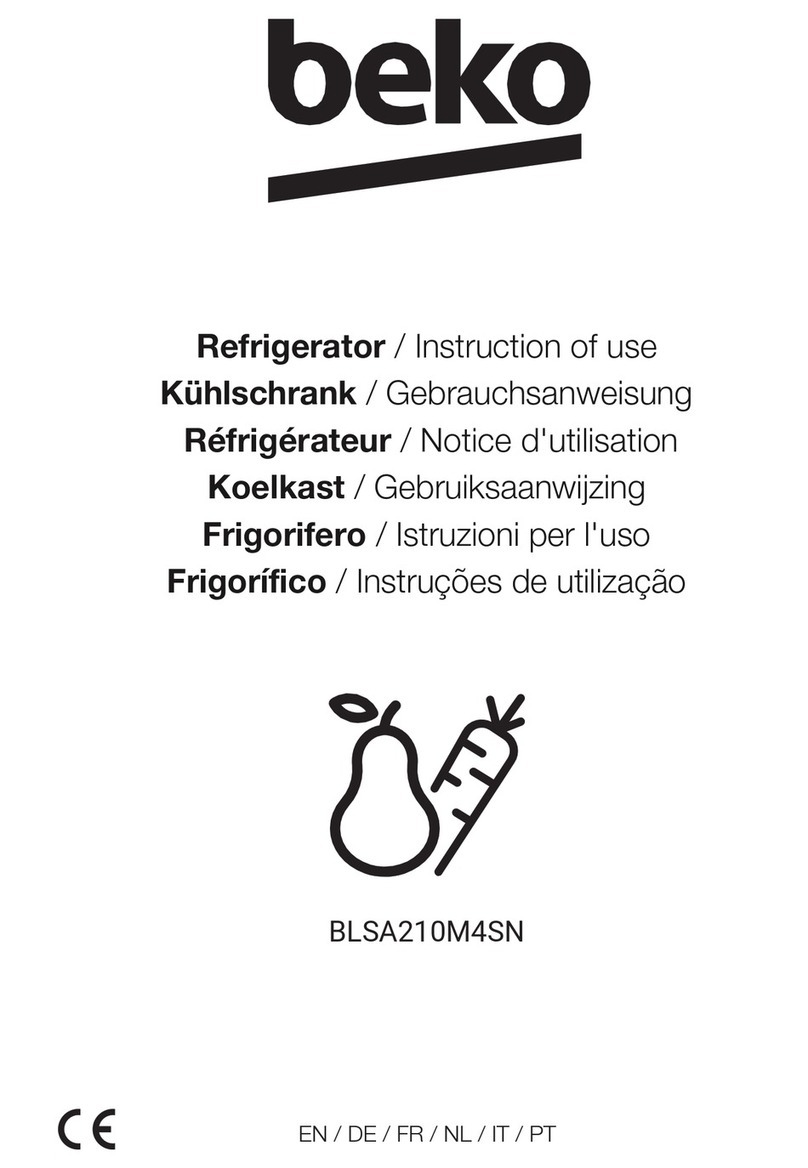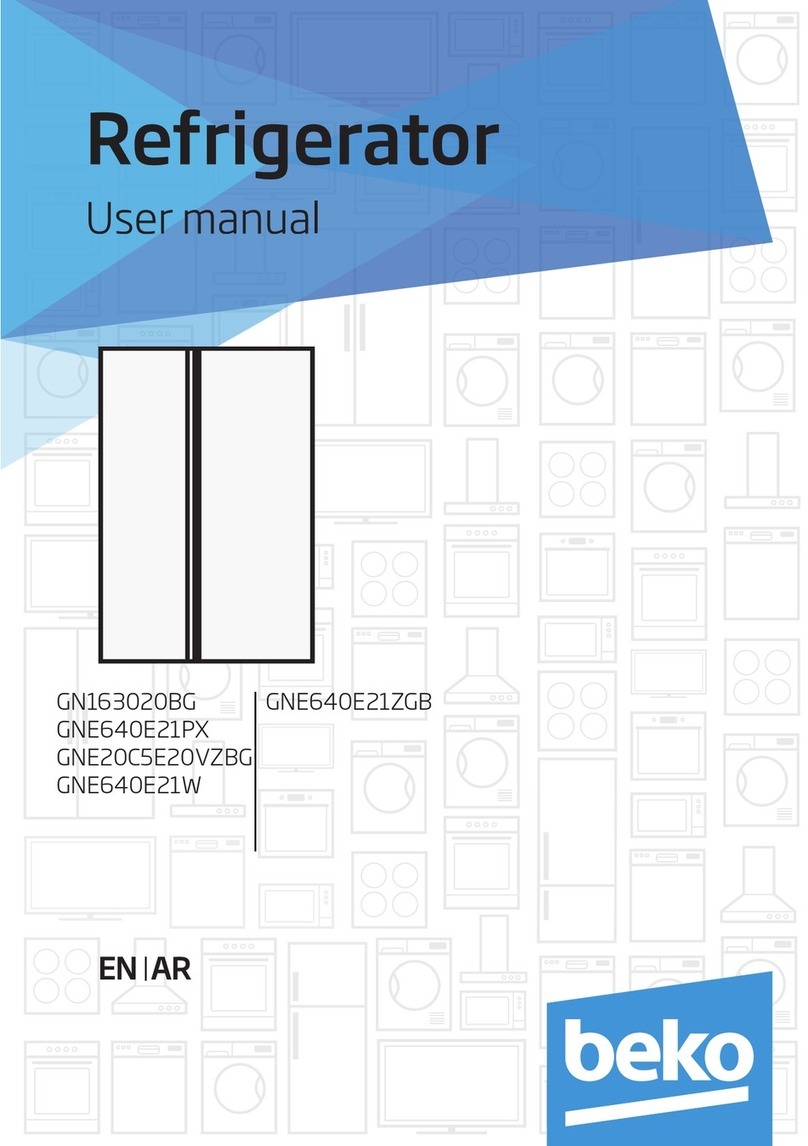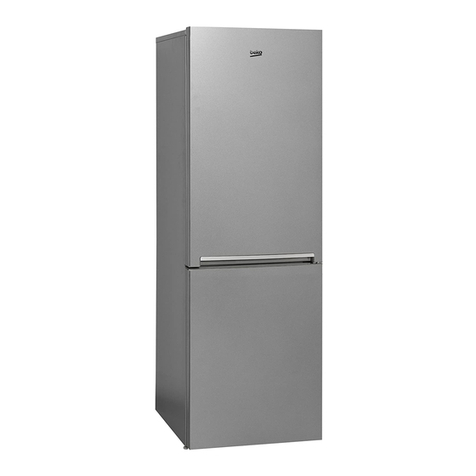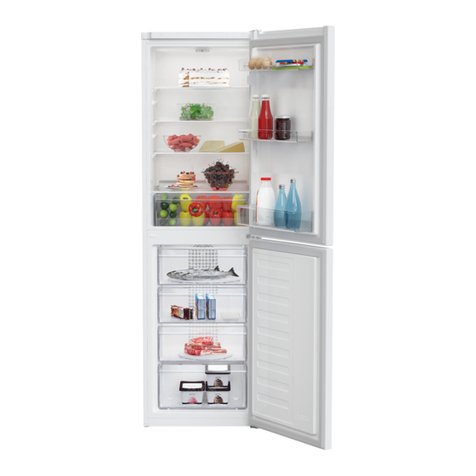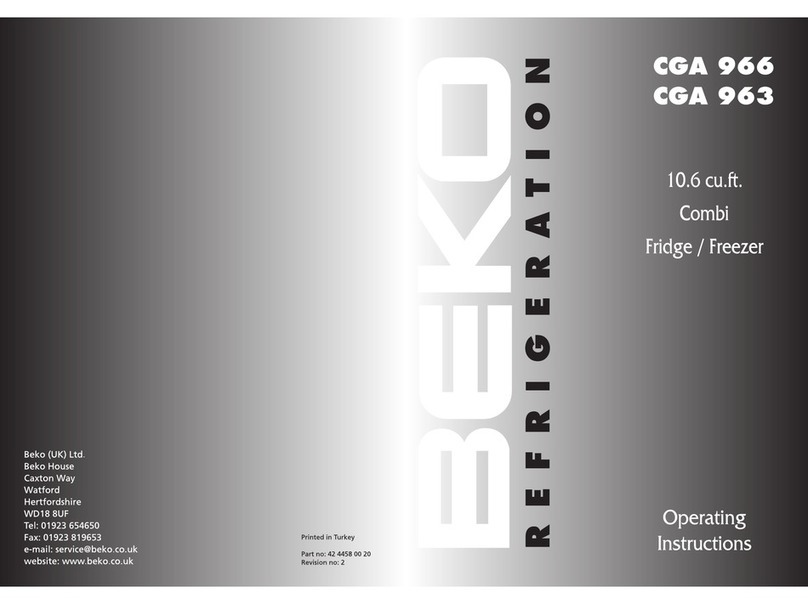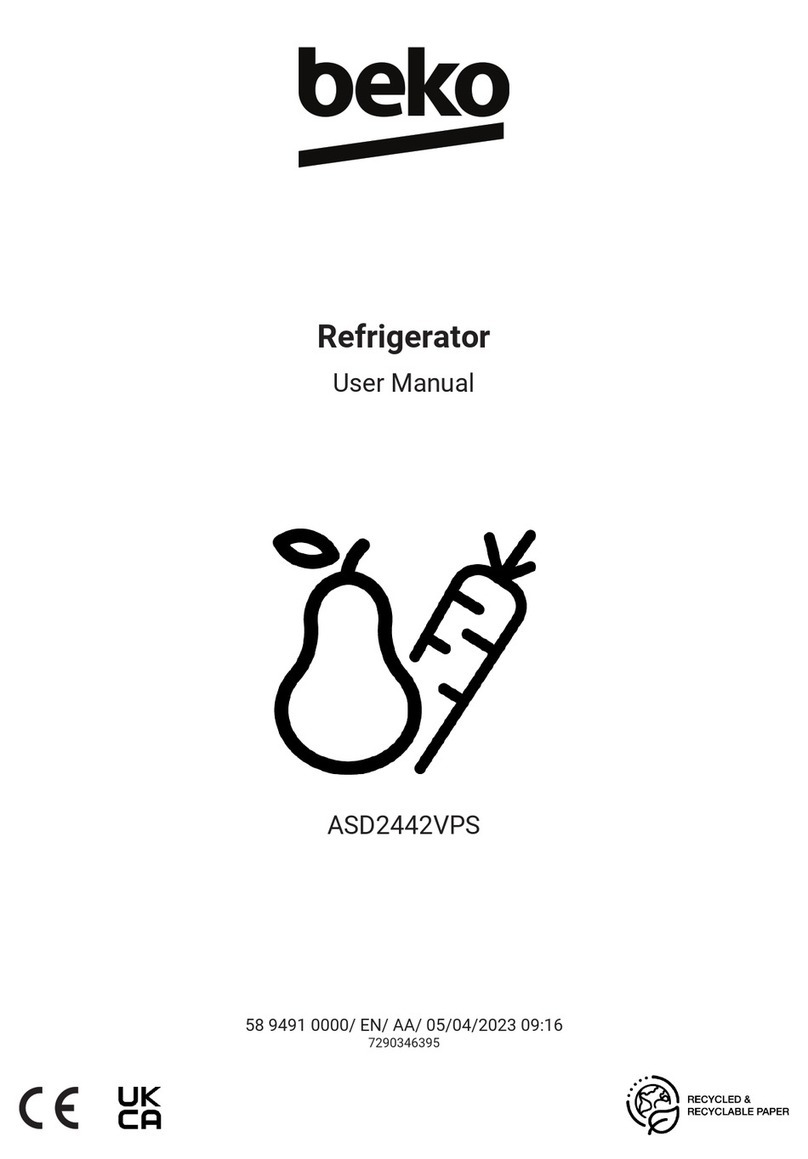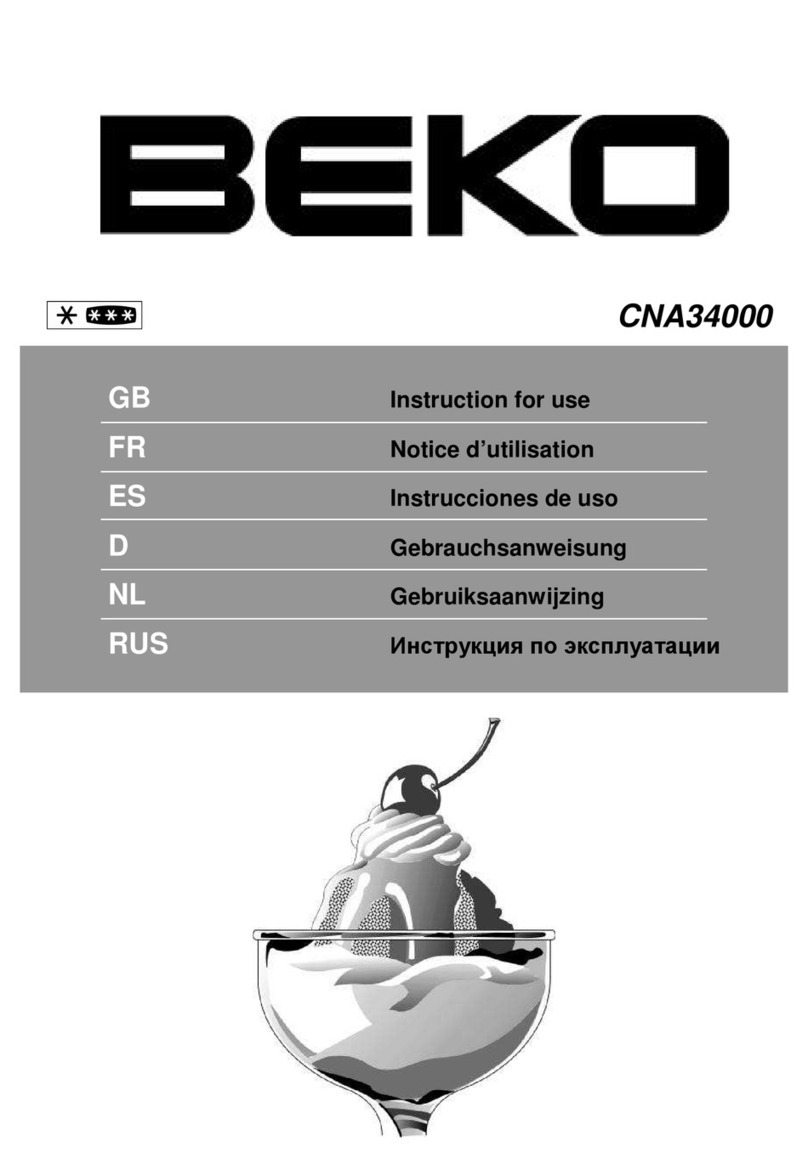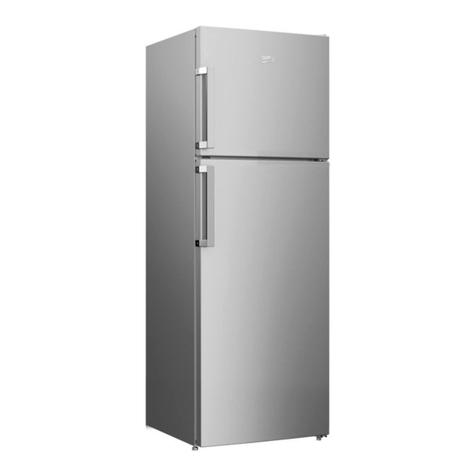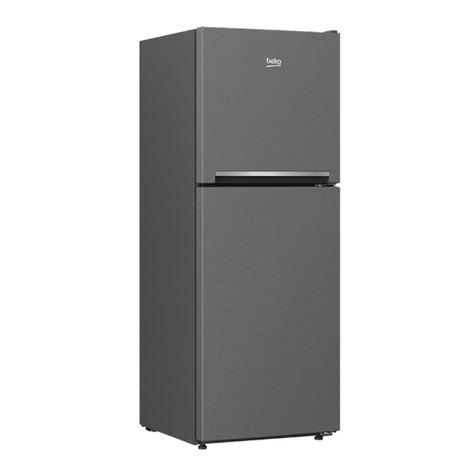
EN
• This product is not intended to be
used by persons with physical,
sensory or mental disorders or
unlearned or inexperienced people
(including children) unless they are
attended by a person who will be
responsible for their safety or who
will instruct them accordingly for use
of the product
• Do not operate a damaged
refrigerator. Consult with the service
agent if you have any concerns.
• Electrical safety of your refrigerator
shall be guaranteed only if the earth
system in your house complies with
standards.
• Exposing the product to rain, snow,
sun and wind is dangerous with
respect to electrical safety.
• Contact authorized service when
there is a power cable damage to
avoid danger.
• Never plug the refrigerator into
the wall outlet during installation.
Otherwise, risk of death or serious
injury may arise.
• This refrigerator is intended for only
storing food items. It must not be
used for any other purpose.
• Label of technical specifications is
located on the left wall inside the
refrigerator.
• Never connect your refrigerator to
electricity-saving systems; they may
damage the refrigerator.
• If there is a blue light on the
refrigerator, do not look at the blue
light with optical tools.
• For manually controlled
refrigerators, wait for at least 5
minutes to start the refrigerator after
power failure.
• This operation manual should be
handed in to the new owner of the
product when it is given to others.
• Avoid causing damage on power
cable when transporting the
refrigerator. Bending cable may
cause fire. Never place heavy
objects on power cable. Do not
touch the plug with wet hands when
plugging the product.
•Do not plug the refrigerator if the wall
outlet is loose.
•Water should not be sprayed directly on
inner or outer parts of the product for
safety purposes.
•Do not spray substances containing
inflammable gases such as propane
gas near the refrigerator to avoid fire
and explosion risk.
•Never place containers filled with water
on top of the refrigerator, otherwise this
may cause electric shock or fire.
•Do not overload your refrigerator with
excessive amounts of food. If
overloaded, the food items may fall
down and hurt you and damage
refrigerator when you open the door.
Never place objects on top of the
refrigerator; otherwise, these objects
may fall down when you open or close
the refrigerator's door.
•As they require a precise temperature,
vaccines, heat-sensitive medicine and
scientific materials and etc. should not
be kept in the refrigerator.
•If not to be used for a long time,
refrigerator should be unplugged. A
possible problem in power cable may
cause fire.
•The plug's tip should be regularly
cleaned; otherwise, it may cause fire.
•The plug’s tip should be cleaned
regularly with a dry cloth; otherwise, it
may cause fire.
•Refrigerator may move if adjustable
legs are not properly secured on the
floor. Properly securing adjustable legs
on the floor can prevent the refrigerator
to move.
•When carrying the refrigerator, do not
hold it from door handle. Otherwise, it
may be snapped.
•When you have to place your product
next to another refrigerator or freezer,
the distance between devices should
be at least 8 cm. Otherwise, adjacent
side walls may be humidified.
